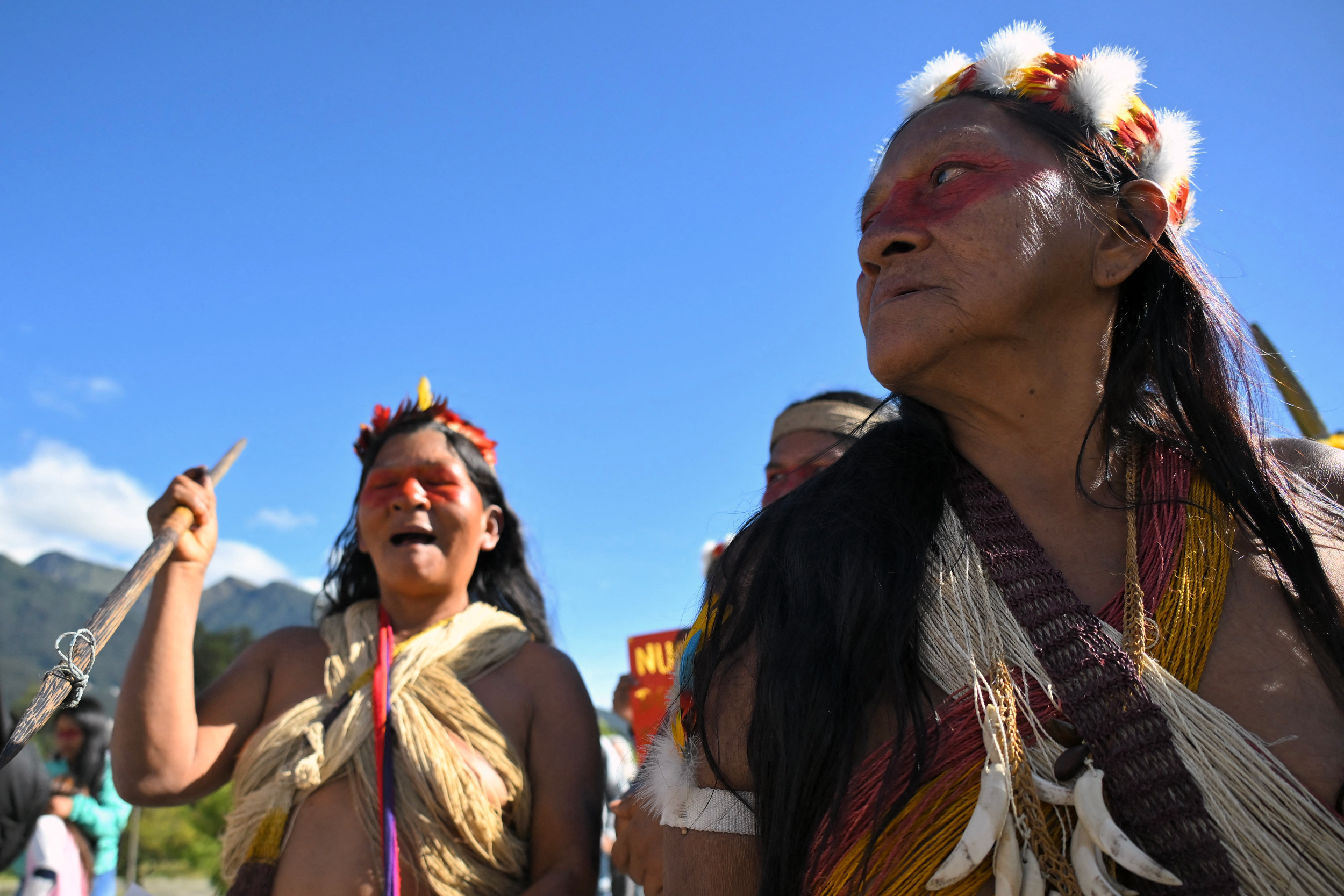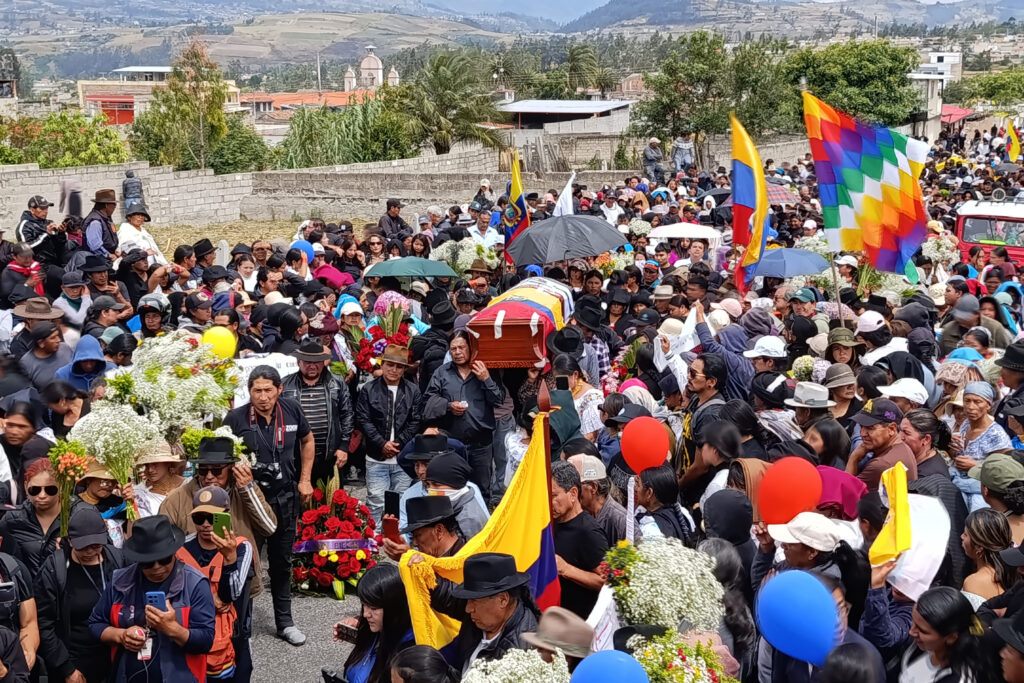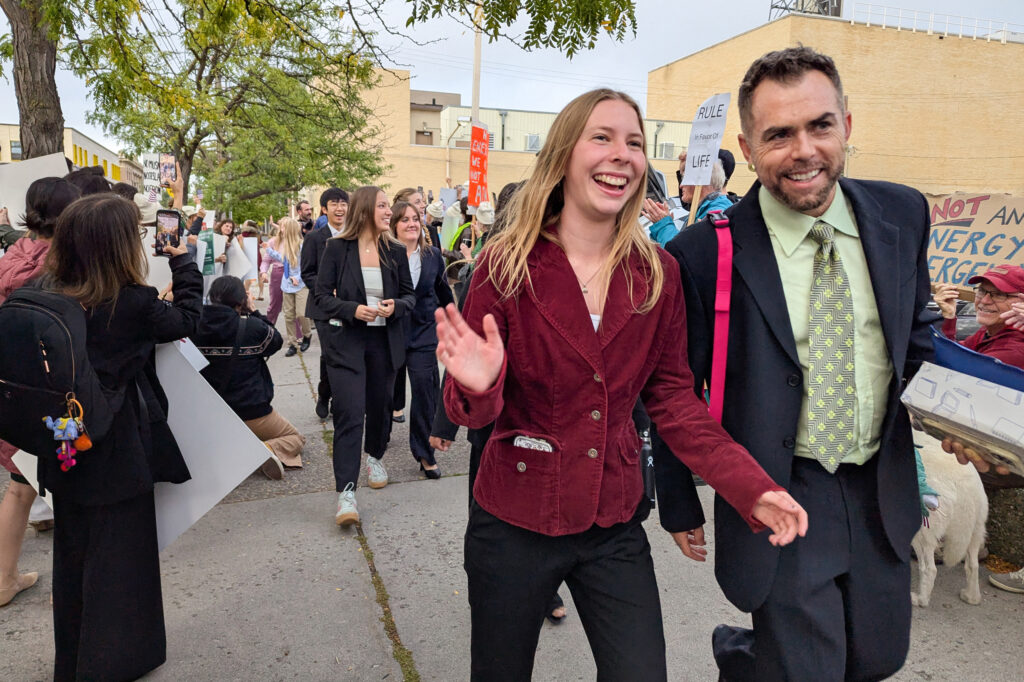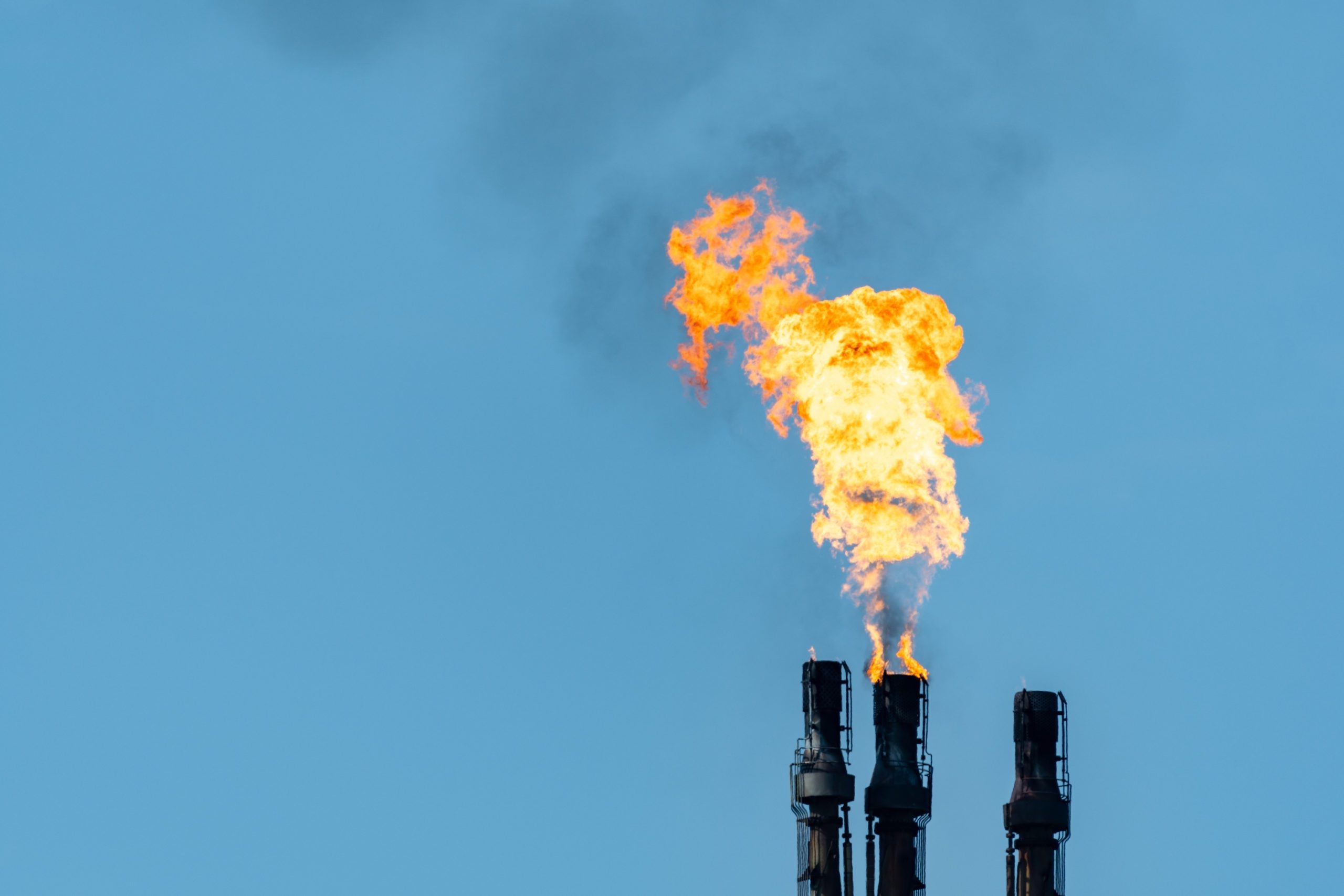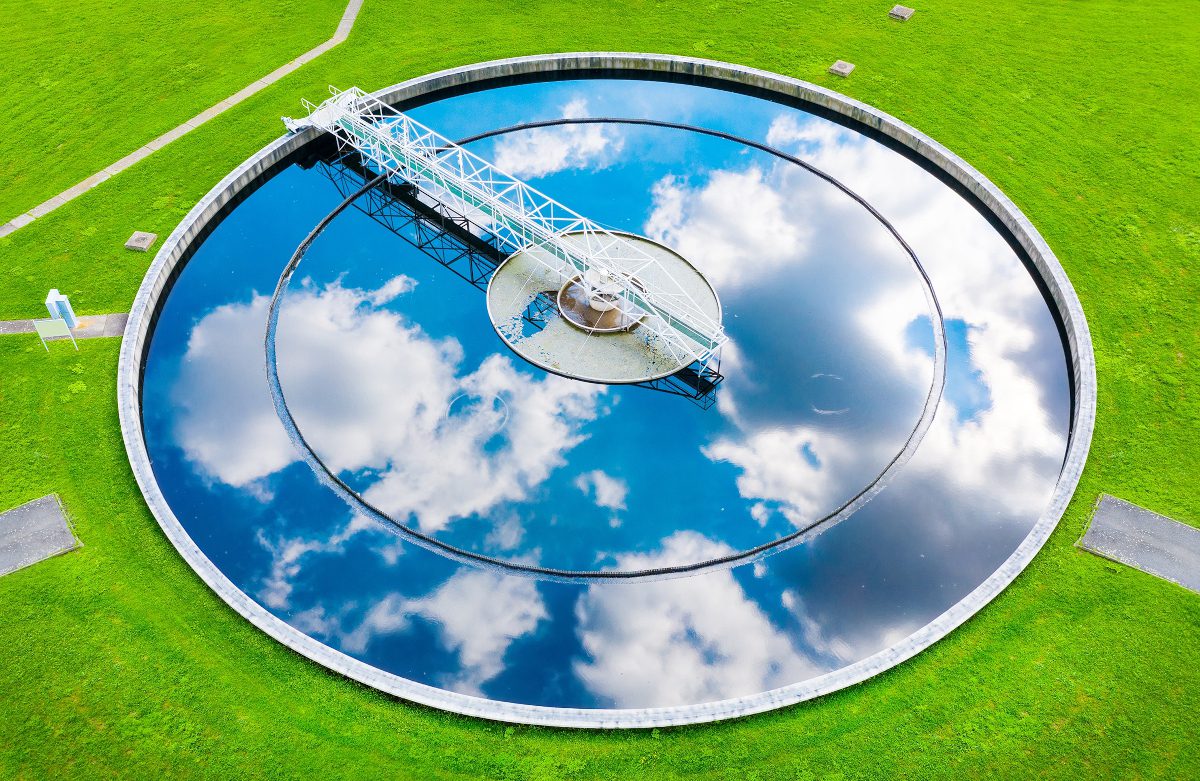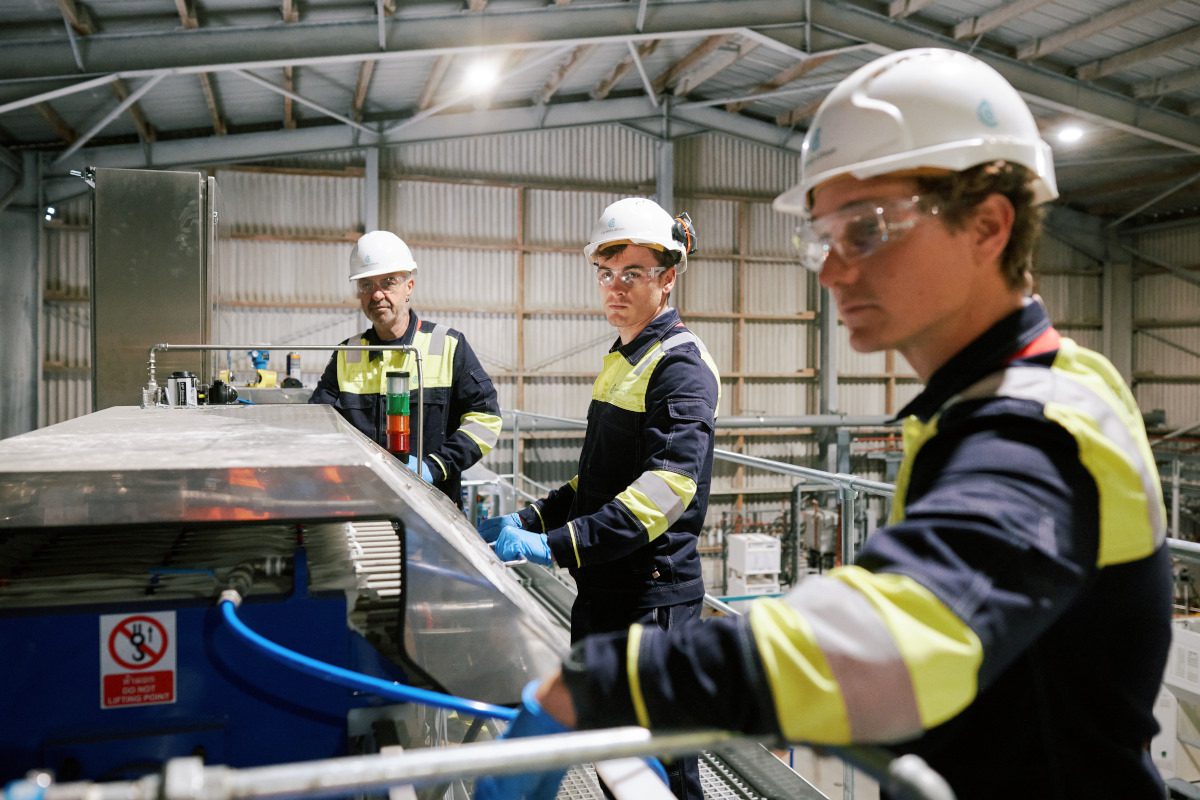It was an audacious moment. During a recent government hearing, allies of former President Jair Bolsonaro berated Brazil’s environment and climate minister, telling Marina Silva she was “hindering our country’s development,” didn’t deserve respect and should “know your place.”
“You just want me to be a submissive woman,” Silva replied. “But I am not.”
A lifelong Amazonian environmentalist credited with helping slash Brazil’s deforestation rates, Silva walked out after further verbal attacks from members of the powerful ruralista caucus—a pro-agribusiness bloc known for pushing policies that drive deforestation and land conflict with the people living in the rainforest.
For a growing women’s climate movement, the exchange was more than political theater. It revealed a connection between aggressive resource extraction and attacks on women.
We’re hiring!
Please take a look at the new openings in our newsroom.
See jobs
Ecofeminism, a theory that emerged in the 1970s, argues that the conquest of nature and the control of women stem from the same values. Brazil’s own history, ecofeminists argue, reflects this: During the 1964 to 1985 military dictatorship, the regime oversaw widespread gender-based violence and launched “Operation Amazonia,” a campaign to colonize the rainforest and eradicate its Indigenous residents.
In the era of climate change, this theory is gaining traction and urgency from the Amazon to the Middle East. Armed with data and their own experiences, women in this new climate movement are pushing beyond calls to simply increase female leadership in forums like the United Nations’ climate talks. They want to take down the systems they see as root causes of climate change, including patriarchy, capitalism and extractivism—the global pursuit of natural resources for export.
“We didn’t just arrive at this moment of climate chaos,” said Osprey Orielle Lake, founder and executive director of the U.S.-based advocacy organization Women’s Earth and Climate Action Network. “It is built upon systems that have created the conditions for us to be at war with our planet instead of living in harmony with nature.”
WECAN, founded in 2009, is one of several organizations convening women across movements and borders around these ideas. From June 23 to 28, the group will hold its 7th “Women’s Assembly for Climate Justice,” a virtual summit featuring more than 125 women leaders from 50 countries. Speakers will include scientists, policymakers, Indigenous leaders and grassroots organizers across two dozen panels covering topics such as food sovereignty, forest protection, land rights, climate justice, alternative economies and the rights of nature. The public can participate by registering on WECAN’s website.

Past participants have included Jane Goodall and Vandana Shiva. This year’s lineup features Mary Robinson, former president of Ireland; Christiana Figueres, executive secretary of the UN Framework Convention on Climate Change during creation of the Paris Agreement; and a wide range of Indigenous and grassroots leaders from around the globe.
For WECAN’s Lake, the movement’s work has never been more urgent. Already this year, the planet has seen climate-fueled wildfire, flooding and triple-digit heat waves across multiple regions.
“This is not just an environmental crisis,” she said. “It is a justice crisis and a societal crisis, and how we respond and who is centered in that response matters deeply.”
The Land and Its Heartbeat
Lake and other women in the movement describe climate change not as a glitch in the system, but the system’s logical outcome, the result of centuries of extractive economies built on disconnection from the natural world. For these women, the path forward isn’t just cleaner energy—it’s a deeper transformation that heals the relationship between people and the Earth.
Ayshka Najib, a climate activist based in the United Arab Emirates, put it this way: “Capitalism is only 500 years old—we created these systems, and we can create newer ones rooted in equality, justice and respect for everyone’s rights.”
To do that, the movement increasingly is looking to women in the Global South—the Indigenous, Quilombola and local communities that have resisted extractive industries while cultivating their own sustainable economies.
For this, the Kichwa women of Sarayaku, Ecuador, are providing a master class. For decades, multinational corporations have sought to extract oil and minerals from their ancestral lands in the Amazon. With the arrival of industry to the region came workers. And with workers came prostitution, alcohol and violence, said Patricia Gualinga, co-founder of the Amazonian Women Defenders of the Rainforest (Mujeres Amazónicas Defensoras de la Selva).


“Women a generation before mine suffered tremendous consequences,” Gualinga said in an interview conducted in Spanish. “Many were sexually raped by workers.”
As forests were razed and waterways polluted, women—responsible for cultivating food—bore gendered impacts. Their workload increased, their health suffered and their traditional knowledge became threatened. “We’re always in constant touch with the land,” Gualinga said. “We can feel it, we can feel the land and its heartbeat.”
Driven by escalating threats, Gualinga and others formed Mujeres Amazónicas Defensoras de la Selva, a coalition of women from multiple Indigenous nationalities, around 2012. They organized protests, partnered with groups like Amnesty International and defended their territories by physically monitoring the forest and turning to the courts. Gualinga’s testimony, for instance, helped Sarayaku win a landmark victory based on the Indigenous right to free, prior and informed consent at the Inter-American Court of Human Rights in 2012.
Their activism has come at a cost: They’ve faced threats, harassment and arson attacks. Still, the women have persisted.


Gualinga and other women in her community have become prominent human rights defenders and promote the idea of the “Living Forest,” a worldview that recognizes the forest as a living, self-regulating being. They’ve launched reforestation projects, held inter-generational trainings and are leveraging their traditional knowledge to build businesses like the creation of all-organic hair products.
“Ultimately, we are here to support other women and amplify their voices,” Gualinga said.
Growing Danger for Women
In communities around the world, extractive companies, climate change and pollution hit women and girls hardest or in gender-specific ways, particularly in low-income populations. These impacts range from adverse pregnancy outcomes to likelihood of displacement and heightened risk of gender-based violence.
More than 842 environmental conflicts worldwide from the late 1960s through 2022 involved “women environmental defenders as visible leaders,” according to an academic analysis of environmental conflicts documented by the watchdog group Global Atlas of Environmental Justice (EJAtlas), considered an undercount. At least 81 of those women were assassinated.
In the United States, violence against Indigenous women is so widespread it has its own name: Missing and Murdered Indigenous Women, or MMIW. Many of these cases are linked to the presence of extractive industries, like oil and gas development, near tribal lands. A 2016 federal study found that 84 percent of American Indian and Alaska Native women have experienced violence in their lifetime, with more than half reporting sexual violence.


The danger isn’t receding. Climate impacts are growing more severe, and the world is on course to exceed the Paris Agreement’s temperature limits. At the same time, governments and corporations are ramping up extractive projects to secure so-called “transition minerals” like lithium, cobalt and nickel, as well as land for carbon offset schemes. The result: a new wave of land conflicts, often in territories that already have a history of violence linked to extractive industries.
Just this month, in Mexico, state police detained Indigenous land defender Estela Hernández Jiménez as she documented alleged abuses against other members of her community, according to the watchdog group Front Line Defenders. At least 10 officers were involved, with witnesses reporting that police used “physical aggression directed at sensitive areas of her body” and that officers “ripped off a button of her blouse, partially exposing her chest, and violently subdued her,” according to Front Line Defenders.
The Mexican Embassy in Washington, D.C., did not respond to requests for comment.
“The Same Systems” at the Root of Problems
Experiencing climate-intensified flooding is what first pulled Najib, the UAE-based activist, into the movement.
In 2018, when she was 14 years old, Najib was visiting her grandmother in South India when the region’s worst flood in decades hit. Trapped inside their home for days without electricity and water, the family eventually fled to safety. The trauma lingered.
“I was afraid to go to sleep because if I fell asleep, the next time I opened my eyes, I’d be underwater,” she recalled during a recent interview.


Now, Najib works with the United Nations and other organizations focused on the gendered impacts of climate change in the Middle East and North Africa. There, worsening heat, water scarcity and ecosystem collapse are magnifying existing inequalities. In communities along Egypt’s Red Sea, for example, many women depend on fishing and farming. But marine life is vanishing, crop cycles are shifting and women—often the primary earners—are losing their ability to provide.
That economic strain, Najib said, has a domino effect: a rise in domestic violence, early child marriage and school dropout rates among girls, as well as growing barriers to basic health needs, including menstrual hygiene.
For those who may balk at the mention of the word patriarchy, Najib underscored the bevy of laws in the region that prevent women from owning land, depriving them of revenue and power to make decisions about their livelihoods.


“We have to understand that the same systems that fuel climate change are the same systems that inflict violence on women’s bodies and restrict their rights,” Najib said.
Even the Intergovernmental Panel on Climate Change, a scientific body convened by the U.N., has said that colonization is a reason some places face worse risks from climate change.
Zukiswa White, a Johannesburg-based climate activist, traces her country’s climate vulnerability back to colonial land theft and resource plunder. First Dutch settlers, then the British, pushed Black South Africans off fertile lands to establish mining and agriculture projects for European profit.
That legacy, White said, persists. Today, extractive industries still dominate the economy and marginalized communities bear the brunt of environmental harm. White works with some of those communities, many of which are impacted by large industries like oil and mining. Those groups, she said, reject Western ideas of progress and are reclaiming or prioritizing other ways of being.


“We’ve been sold the lie that there’s only one path to development,” White said. “But we know things haven’t always been like this—and around the world, there are millions resisting a culture of endless growth and exploitation.”
This, she said, is a core struggle for the women’s climate movement: “Big business has captured peoples’ imaginations. We need to break that.”
“They Are the Solution”
What alternatives does the movement promote?
When asked, Lake began by drawing a sharp line between the dominant extractive economy and the women-led models rising in its place. Extractivism, she said, is rooted in domination of nature and labor of the many by the few. It thrives on hierarchy and treats the Earth as a thing to be exploited. But women-led alternatives offer a different path, grounded in collective care for all and a reciprocal relationship with the natural world.
This story is funded by readers like you.
Our nonprofit newsroom provides award-winning climate coverage free of charge and advertising. We rely on donations from readers like you to keep going. Please donate now to support our work.
Donate Now
This ethos has naturally aligned ecofeminists with the growing rights of nature movement, which seeks legal recognition of ecosystems as living entities with inherent rights—like a river’s right to flow or a whale’s right to migrate.
Many tribal nations as well as countries including Spain, Bolivia, Colombia, New Zealand and India have passed such laws, making the rights of nature a gateway to rethinking how societies are structured. The laws aren’t merely symbolic. In Ecuador, a forest has defeated a mining company in the country’s highest court. In Panama, they’ve been used as a basis for establishing a marine protected area for sea turtles. And in Peru, a river basin degraded by decades of oil spills can now go to court, through its Indigenous legal guardians, to fight back.
Lake pointed to a range of other thriving initiatives: reforestation projects, “well-being economies,” the Fossil Fuel Non-Proliferation Treaty, seed saving networks and cooperatives focused on agriculture, locally owned power and childcare.
“Research is pretty clear that when you take a lot of these community-led solutions, often run by women, they’re highly successful,” Lake said. “When you add them all up, it creates a very large solution that supports local communities and cares for more people than these top-down programs.”
But that cumulative impact, she said, is often ignored or dismissed.
“If you look at one person or community doing a food sovereignty project, you might think, ‘Oh gosh, they’re only feeding 1,000 people. How can that save the world?’ But people fail to mention that if you add up hundreds and hundreds, if not thousands, if not millions, of these small, local solutions—they are the solution.”


Next week’s Women’s Assembly for Climate Justice comes against a global backdrop of backsliding on women’s rights and environmental protection.
In March, the U.N. reported that one in four countries is seeing increased gender discrimination, weaker legal safeguards for women and diminished funding for gender-related programs—or all three. That includes the United States, where President Donald Trump has championed broad rollbacks, from defunding women’s health services to gutting mentions of “women,” “gender” or “climate crisis.” He has repeatedly dismissed climate change as a hoax and has presided over one of the most sweeping assaults on environmental and public health safeguards in modern U.S. history, including cuts to renewable energy initiatives.
The White House did not respond to a request for comment.
“It’s called drill, baby, drill,” Trump told Congress in March.
Women leaders in the movement are using the turbulence to underscore what’s at stake and to fight harder. “If we don’t push back,” Lake said, “we will keep losing ground.”
Having honed its organizing process over the past 15 years, WECAN plans to take the insights from next week’s assembly and turn them into a call to action aimed at governments, financial institutions and international agencies in the lead-up to the COP30 global climate change gathering later this year in Brazil. In the past, the organization’s advocacy has contributed to milestones such as the establishment of the first Gender Action Plan under the U.N. climate negotiations.
“What’s really essential in terms of how we create the world we want is to have direct interventions with policy makers and government leaders,” Lake said. “Our narrative, our solutions will be brought into the mainstream.”
About This Story
Perhaps you noticed: This story, like all the news we publish, is free to read. That’s because Inside Climate News is a 501c3 nonprofit organization. We do not charge a subscription fee, lock our news behind a paywall, or clutter our website with ads. We make our news on climate and the environment freely available to you and anyone who wants it.
That’s not all. We also share our news for free with scores of other media organizations around the country. Many of them can’t afford to do environmental journalism of their own. We’ve built bureaus from coast to coast to report local stories, collaborate with local newsrooms and co-publish articles so that this vital work is shared as widely as possible.
Two of us launched ICN in 2007. Six years later we earned a Pulitzer Prize for National Reporting, and now we run the oldest and largest dedicated climate newsroom in the nation. We tell the story in all its complexity. We hold polluters accountable. We expose environmental injustice. We debunk misinformation. We scrutinize solutions and inspire action.
Donations from readers like you fund every aspect of what we do. If you don’t already, will you support our ongoing work, our reporting on the biggest crisis facing our planet, and help us reach even more readers in more places?
Please take a moment to make a tax-deductible donation. Every one of them makes a difference.
Thank you,





